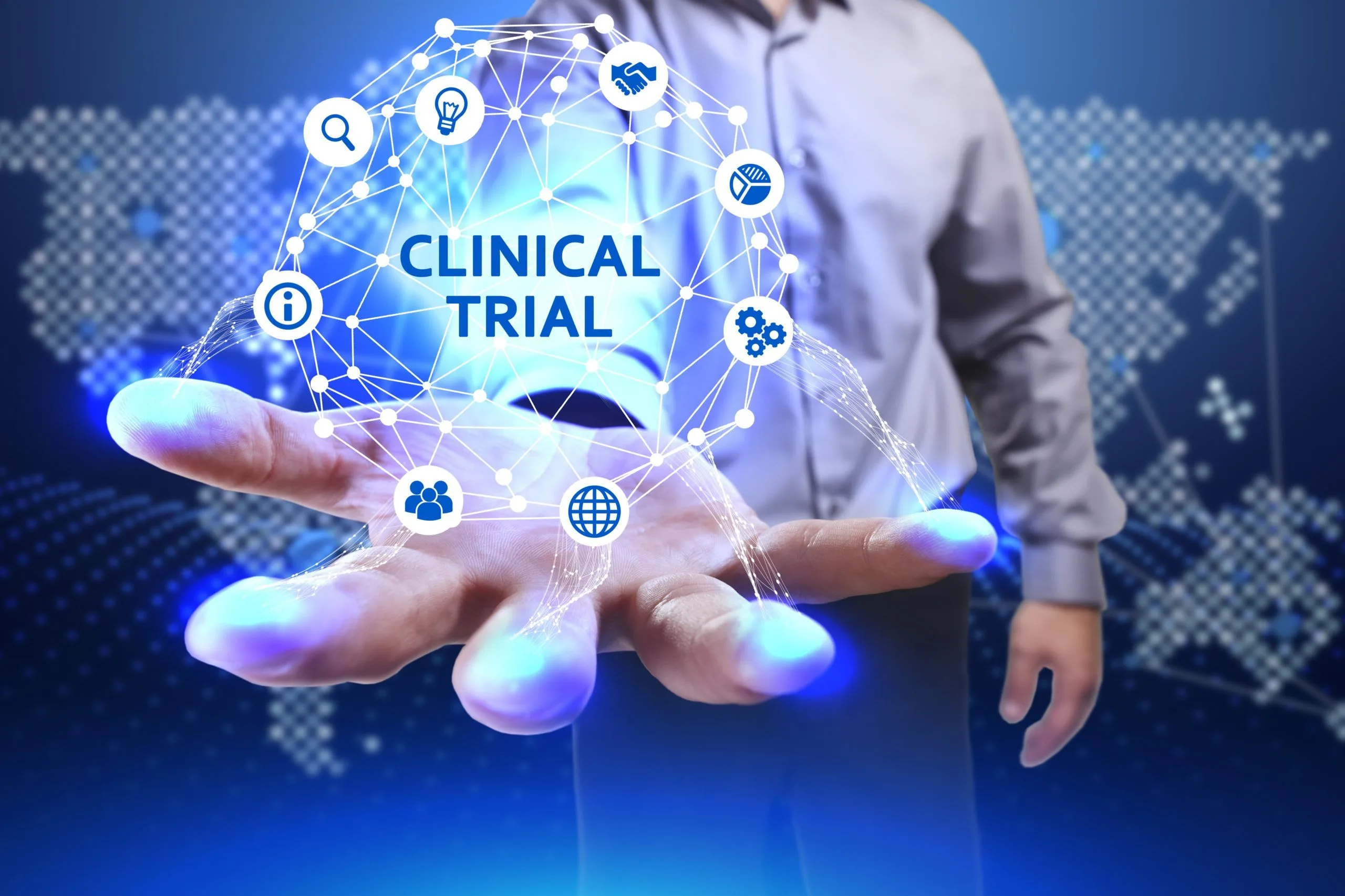Advice for Streamlining Clinical Trials and Drug Development Process

by Kimberly Brue | Last Updated: October 13, 2020 | 1 min read
We asked an experienced physician for a solid opinion on needed improvements in the clinical space and pharma’s pursuit of licensed drugs. Dr Kenyatta Cosby, MD, provided us with this perspective. He is a seasoned and published practitioner with many successful and highly-regarded trials under his belt – and someone who definitely understands the strategic and operational pursuits of the drug development process. We are proud to have Dr Cosby provide his expert opinion on today’s clinical climate and opportunities to streamline the drug development pipeline
Dear Colleagues,
If you are a pharmaceutical executive, senior health administrator, or public policy-maker, please indulge me for a moment to be reminded that continued investments into innovative ideas are what’s needed in order to transform current challenges within the drug-development and randomized clinical trial (RCT) process. For decades, scientific and business-centric stakeholders have struggled to produce a pathway that enables the transformation of intuitive workflows, advanced analytics, and smart devices (i.e., cloud-based connectivity) into a robust pipeline for discovering blockbuster medications like Keytruda1, Humira2, Eliquis3, Opdivo4, and Imbruvica5.
New vaccine operations being implemented by leading drug-makers and the federal government in response to the global COVID-196 pandemic have offered renewed hope about a new logistical framework to help accelerated RCT. Surprisingly, it was only in 2014, when a widely-held therapeutic reality was published in _the New York Times_7 which suggested that fewer blockbuster drugs were being produced and the financial requirements for a novel drug to enter the therapeutic marketplace in the United States was becoming too costly.
Today, however, the good news is that the former is no longer true; drug makers are now seeking more novel drug approvals8 from the Food and Drug Administration (FDA)9. The automation of many operations and the creation of specialized workflows via biometric and RFID enabled smart devices had a lot to do with integrating biotech labs with commercial organizations. Unfortunately, the part about high costs still holds true, and in some regards is getting worse. A new study published by a team at MIT Sloan School of Management and the Laboratory for Financial Engineering10, suggests that the current cost to bring a new drug to the market is estimated to be as high as $2.8 billion11, with two-thirds of this cost going to the clinical trial process, and 90%12 of these trials ending in failure.
Notwithstanding these hard facts and other frustrations throughout the drug commercialization process, there is an emerging consensus by key stakeholders to bet on leveraging artificial intelligence (AI)13 and machine learning capabilities to ensure scientific integrity and contain cost over time. Some of the newest platforms utilizing this technology are geared towards “site-less” clinical trials14 and the acceleration of time needed to receive FDA-approval. A leader in this space is Janssen Clinical Innovation (JCI)15, part of Janssen Research & Development, LLC.
JCI has demonstrated notable successes with clinical initiatives such as their utilization of direct-to-patient and real-world data platforms. Key examples of their business platforms are a large-scale observation and treatment program, mSToPS16 (short for mHealth Screening To Prevent Strokes), the use of digital technology to decrease paperwork and logistical challenges (i.e., eConsent17, registrational clinical trial18) and iSTEP19 (short for Integrated Smart Trial & Engagement Platform).
However, when it comes to making a significant change at the individual-level and maximizing the workflow within a 24-hour work cycle, P360 is a clear leader in this space. They specialize in robust clinical trial management systems, which are easy to integrate and produce a seamless flow of functionality across operations (i.e., start-up, enrollment, execution, and tracking). P360’s most revolutionary tool is Curotrak, which is a cloud-based trial management software suite that allows the clinician centralized safeguards over multiple programs in terms of processes and data safety involved with planning, implementation and closeout activities. These innovative tools provide a broad change in the traditional clinical trial approach that gives corporations a customer-focus within regulatory guidelines.

As you know, the need for speed throughout the clinical trial process has also engulfed the federal government as evident by “Operation Warp Speed (OWS)”20. This is their latest effort to produce safe and effective treatments and vaccines for COVID-19, by January 2021. Their most recent therapeutic success is the FDA’s approval of Convalescent Plasma21 for the emergency use in those testing positive and hospitalized with COVID-19. This tremendous accomplishment occurred through the collaboration between the Health and Human Services (HHS)22 and the Mayo Clinic23, which utilized innovative corporate tools, through the auspices of a cost-sensitive program that only cost upwards of $200 million dollars.
Admittedly, this clinical achievement is a win-win for all pharmaceutical stakeholders who are involved with using new operations to streamline their drug development processes. Many therapeutic benefits from Big Pharma partnerships like industry-leaders GlaxoSmithKline24, AstraZeneca25, Moderna26, Pfizer/ Biopharmaceutical New Technologies (BioNTech)27, J&J28, and Merck29 have materialized as they facilitate RCT changes on behalf of the world’s human population.
The convalescent plasma clinical breakthrough have also come weeks after the FDA had approved an emergency use for the infamous Hydroxychloroquine30 and Remdesivir31, each facing tremendous scrutiny from both sides of the political spectrum. Politics aside, these scientific advancements should be considered game-changing events and critically studied to maximize operational strategies that forge new biomedical protocols and innovative technologies.
For healthcare officials, scientist and academicians, what is probably most intriguing regarding the RCT process and OWS is the unprecedented short time allocation associated with pipeline development, product manufacturing, and the efficient distribution of resources between federal agencies and private firms. What truly should be acknowledged is that the COVID-19 pandemic has brought to bear a stepwise approach to develop medical countermeasures during a national crisis that can also be utilized during standard public health events.
To my knowledge, the current COVID-19 RCTs are focus on five clinical stages of the disease process: Pre-exposure prophylaxis, Post-exposure prophylaxis, Hospital admission, Late-stage critical care and Outpatient treatment. The outcome data for each area has been promising, but there is still a need for caution given that various studies have only demonstrated incremental reductions in patient mortality. This is where innovative solutions like Swittons, an loT powered smart device by P360, can use advanced analytics and AI deployment via automated messaging and push/pull data streaming to accelerate sales operations for pharmaceutical organizations. It is these types of solutions that will ultimately enhance commercial value to the “customer experience”.
In addition, some of the performance metrics, which are measured in an RCT, can act as vulnerabilities and potential threats to the internal and external validity of a clinical investigation. Some of these problematic areas before and throughout an RCT could be the patient’s medication compliance rate as well as their ability to start and complete the trial. These metrics are critical to the success of any RCT, and if not accounted for early on, can present serious consequences such as study dropouts and costly trial delays. Attrition is a leading factor for missing data, and inevitably can make it more difficult for a researcher to generalize their study results. Such situations are why industry-leaders in the life sciences are addressing complex technical work like integrating data-collection across platforms by deploying technology and expertise delivered by P360.
Industry research professionals also suggest that RCTs have significant patient recruitment/retention problems, and should anticipate a dropout rate anywhere from 20% – 40%32 and consider such events when calculating study sample size. This inherit flaw, with innovative technologies from leaders like P360, can be mitigated to facilitate maximum convenience, accessibility, and reduction of such inefficiencies.
In November of 2019, the National Academies of Sciences, Engineering, and Medicine hosted a workshop (i.e., Sharing Clinical Trial Data: Challenges and a Way Forward33), which updated the release of the Institute of Medicine (IOM) consensus study report of 2015 (i.e., Sharing Clinical Trial Data: Maximizing Benefits and Minimizing Risk34). These two reports are helpful guidelines for innovators to use when learning best practices of handling RCTs data.

Researchers should always implement robust RCT designs so that items such as study attrition and participant makeup are accounted for; thereby, making results easily generalizable to the public at large. Recently, published in the Boston Business Journal, community leaders urged Moderna Inc and Brigham and Women’s Hospital35 to include more minority participants in their ongoing COVID-19 vaccine trial. This request occurred because in the final stages of their 30,000-participant recruitment effort, only 4% of the participants were from the minority and underserved community. Yet, the COVID-19 virus disproportionately impacts such groups.
In The Washington Post’s36 coverage, Pfizer was also included. The piece suggested that, between the two companies, only a fifth (the bare minimum of diversity) of their participants are from Black and Hispanic communities.
The take-home messages from OWS are that the operational changes demonstrated as essential practices for future drug-development success include: 1) The creation of a robust patient recruitment strategy, 2) Reinventing the clinical trial logistical framework ( i.e., P360 and fast-tracking drug-development), and 3) Global data sharing to accelerate production time and reduce procedural red-tape. These three areas of RCT excellence also reiterate the critical numbers that make the drug development industry a grand challenge; $2.8 billion37 (the overall cost to develop one new drug), 14%38 (the FDA approval rate for drugs entering clinical development), 8.2 years39 (the mean average development and review time to move a product from clinical development through FDA approval), 90%40 ( the failure rate of phase I clinical trials, 50%41 (the probability of a phase III new drug candidate to receive FDA approval), 20 years42 ( the life-span of a patent issued by the United States Patent and Trademark Office).
To date, OWS has not changed the critical numbers, but what it has done is initiate a sea change of possibilities regarding key operates within the drug-development process that over time will facilitate a change in the critical numbers. The clinical utility of OWS43 is a more efficient step-wise approach to the next blockbuster drug, like with the days of Viagra44, Lipitor45, Tagamet46, and Zoloft47.
Forward-thinking companies like Merck48, AbbVie49, Bristol-Myers Squibb50, Pfizer51, and Johnson & Johnson52 have always known the power of innovative-thinking, and such understanding will allow them to remain dominate global drug-makers with incredible therapeutic momentum. The odds are that their sales forecasts based upon investments in innovative ideas will eventually manifest as a great stock performance over the next several years.
The ultimate news for drug-development stakeholders is that the work to develop time-sensitive pathway for streamlining operations with intuitive workflows, advanced analytics, and smart devices has already begun. Bloomberg Press53 reports promising revenues for the RCT service markets, which are slated to grow 10% annually for the next 5 years and will be worth $150 billion by 2030. And this is why smart investments in solutions from companies like P360 is so important.
Sincerely,
Kenyatta Cosby, MD
Explore More Relevant Articles on P360
- The Power of Dashboards with Machine Learning for Pharma
- Learn How to Develop a New Pharma Launch Strategy That Wins
- P360/Swittons - Press Release - April 2020
- State Laws Seek to Regulate Sales Rep & Physician Interactions
- Power BI Insights for C-Suite from Microsoft MegaExpert Belinda Allen – Part 2
References:
1: https://www.keytruda.com/
2: https://www.humira.com/humira-complete/support-resources?cid=ppc\_ppd\_msft\_humira\_complete\_humira%20information\_help\_phrase\_us-hum-190617&msclkid=ea7ef1e005d718cc6e1daeb7d40c29bf
3: https://www.eliquis.bmscustomerconnect.com/afib/taking-eliquis?cid=sem\_998063&ovl=isi&
4: https://www.opdivo.com/
5: https://www.imbruvica.com/?&utm\_source=bing&utm\_medium=cpc&utm\_campaign=Imbruvica+DTC+-+Branded+-+2020%3BS%3BPH%3BBR%3BONC%3BDTC%3BBR&utm\_content=Imbruvica&utm\_term=imbruvica+medication&msclkid=de008b0a7d9514ec43c3d45daef3fc50&gclid=COLW7\_Gd2usCFZYIiAkdM7ABoA&gclsrc=ds
6: https://www.cdc.gov/coronavirus/2019-ncov/global-covid-19/index.html
7: https://www.nytimes.com/2014/11/16/magazine/why-are-there-so-few-new-drugs-invented-today.html
8: https://www.statnews.com/pharmalot/2018/02/28/fda-orphan-drugs-prices/
9: https://www.fda.gov/
10, 11: https://lfe.mit.edu/
12: https://academic.oup.com/biostatistics/article/20/2/273/4817524#200808417
13: https://en.wikipedia.org/wiki/Artificial\_intelligence
14: https://www.drugdiscoverytrends.com/are-site-less-trials-the-future-of-clinical-research/#:~:text=The%20site-less%20clinical%20trial%20model%20provides%20a%20number,reduce%20clinical%20timelines%20and%20reduce%20costs%20for%20sponsors.
15: https://www.janssen.com/ireland/innovation
16: https://clinicaltrials.gov/ct2/show/NCT02506244
17: https://www.janssen.com/clinical-trials/innovation
18: https://www.lawinsider.com/dictionary/registrational-trial
19: https://www.janssen.com/clinical-trials/innovation
20: https://www.hhs.gov/about/news/2020/06/16/fact-sheet-explaining-operation-warp-speed.html
21: https://www.fda.gov/news-events/press-announcements/fda-issues-emergency-use-authorization-convalescent-plasma-potential-promising-covid-19-treatment
22: https://www.hhs.gov/about/news/2020/06/16/fact-sheet-explaining-operation-warp-speed.html
23: https://www.mayoclinic.org/
24: https://www.gsk.com/en-gb/
25: https://www.astrazeneca.com/
26: https://www.modernatx.com/
27: https://www.gsk.com/en-gb/
28: https://www.jnj.com/
29: https://www.merck.com/
30: https://www.msn.com/en-us/health/health-news/study-finds-hydroxychloroquine-helped-coronavirus-patients-survive-better/ar-BB16hifu
31: https://www.remdesivir.com/us/
32: https://www.clinicalleader.com/doc/considerations-for-improving-patient-0001
33: https://www.nationalacademies.org/our-work/sharing-clinical-trial-data-reflecting-back-and-looking-ahead-a-workshop
34: https://pdfs.semanticscholar.org/6b8a/bc8475d4147515088fee6595f2203779585a.pdf
35: https://www.bizjournals.com/boston/news/2020/08/24/brigham-moderna-vaccine-trial-criticized-on-divers.html
36: https://www.washingtonpost.com/health/2020/08/27/large-us-covid-19-vaccine-trials-are-halfway-enrolled-lag-participant-diversity/
37: https://www.biopharmadive.com/news/new-drug-cost-research-development-market-jama-study/573381/
38: https://www.centerwatch.com/articles/12702-new-mit-study-puts-clinical-research-success-rate-at-14-percent
39: https://drug-dev.com/development-timelines-drug-development-times-what-it-takes-part-1/
40: https://blogs.sciencemag.org/pipeline/archives/2019/05/09/the-latest-on-drug-failure-and-approval-rates
41: https://blogs.sciencemag.org/pipeline/archives/2019/05/09/the-latest-on-drug-failure-and-approval-rates
42: https://www.uspto.gov/patents-getting-started/general-information-concerning-patents
43: https://www.hhs.gov/sites/default/files/fact-sheet-operation-warp-speed.pdf
44: https://www.viagra.com/
45: https://www.lipitor.com/
46: https://www.tagamet.com/
47: https://www.zoloft.com/
48: https://www.merck.com/
49: https://www.abbvie.com/
50: https://www.bms.com/
51: https://www.pfizer.com/
52: https://www.jnj.com/
53: https://www.bloomberg.com/press-releases/2020-08-24/visiongain-publishes-pharma-clinical-trial-services-market-and-industry-forecast-2020-2030-report
54: Chi Heem Wong, Kien Wei Siah, Andrew W Lo. Estimation of clinical trial success rates and related parameters. Biostatistics, Volume 20(2): pp 273-286; April 2019. (https://academic.oup.com/biostatistics/article/20/2/273/4817524)
55: https://www.fda.gov/patients/learn-about-drug-and-device-approvals/drug-development-process.
56: https://www.fda.gov/emergency-preparedness-and-response/counterterrorism-and-emerging-threats/coronavirus-disease-2019-covid-19
57: DiMasi JA. Cost to Develop and Win Marketing Approval for a New Drug is $2.6 Billion. Briefing: Tufts Center for the Study of Drug Development (November 18, 2014). http://csdd.tufts.edu/news/complete\_story/pr\_tufts\_csdd\_ 2014\_cost\_study.
58: U.S. Department of Health and Human Service, Food and Drug Administration, Center for Drug Evaluation and Research, Center for Biologics Evaluation and Research, Center for Devices and Radiological Health. Guidance for Industry: Use of Electronic Health Data in Clinical Investigations.http://www.fda.gov/downloads/ drugs/guidances/ucm501068.pdf
ABOUT THE AUTHOR
Dr. Cosby is a contributing freelance medical writer based in Rockville, Maryland, U.S.A. He is a Physician Scientist who received his medical degree from Howard University College of Medicine and research training at the National Heart Lung Blood Institute/National Institutes of Health and Johns Hopkins University School of Medicine. He successfully managed an FDA-approved clinical trial which was featured in the New York Times (https://www.nytimes.com/2003/11/03/us/study-finds-that-nitrites-in-the-body-greatly-aid-blood-flow.html) and the scientific manuscript reported in the journal, Nature Medicine. He also successfully writes on many other topics (i.e., Surgery, Diabetes, Oncology, Hematology, Cardiovascular Research, Imaging, Mental Health Disorders, and Cardiology).
